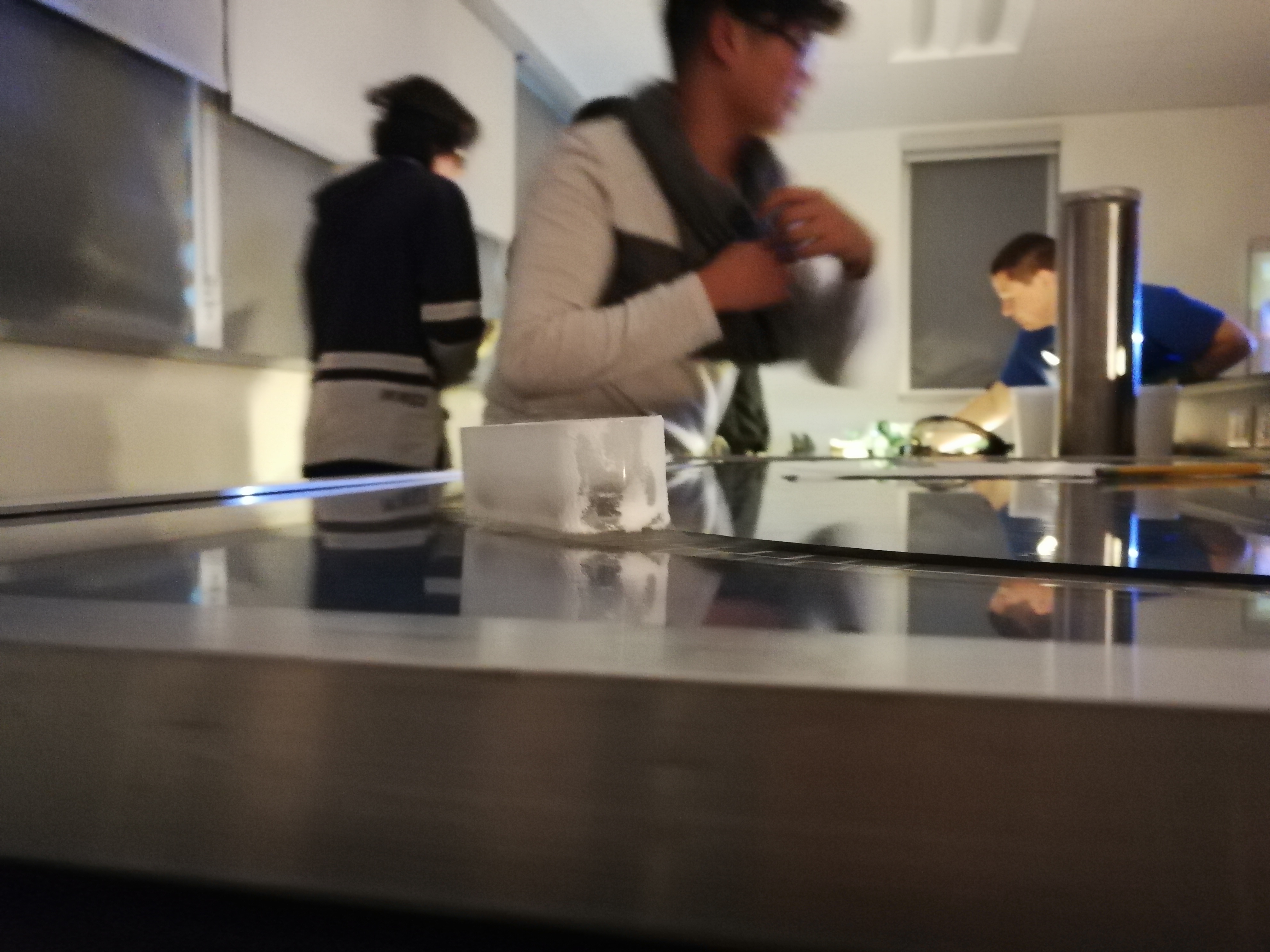
Physics Excursion!
Today, we went on a field trip to the University of Waterloo to explore the applications of many advanced physics concepts! We got a hands on demonstration from @QuantumIQC on quantum computing, and @WaterlooSci on several different physics labs.
I learned a lot with just a little glimpse into some of the most fascinating discoveries of science. Here are some of the highlights:
1) Electricity can travel through electromagnetic waves. This means that an electric circuit does not need everything to be “touching” each other via a wire or some other conductor! The emission of electromagnetic radiation can complete an electric circuit. This is how we get wireless chargers to work; by winding coils in the charger and the device, we can transfer electricity over wirelessly! However, because electromagnetic radiation can be dangerous at the high levels needed to charge devices effectively, true wireless is not very practical at the moment as it can be very deadly. Instead, we must place the device in extremely close proximity to the charger.
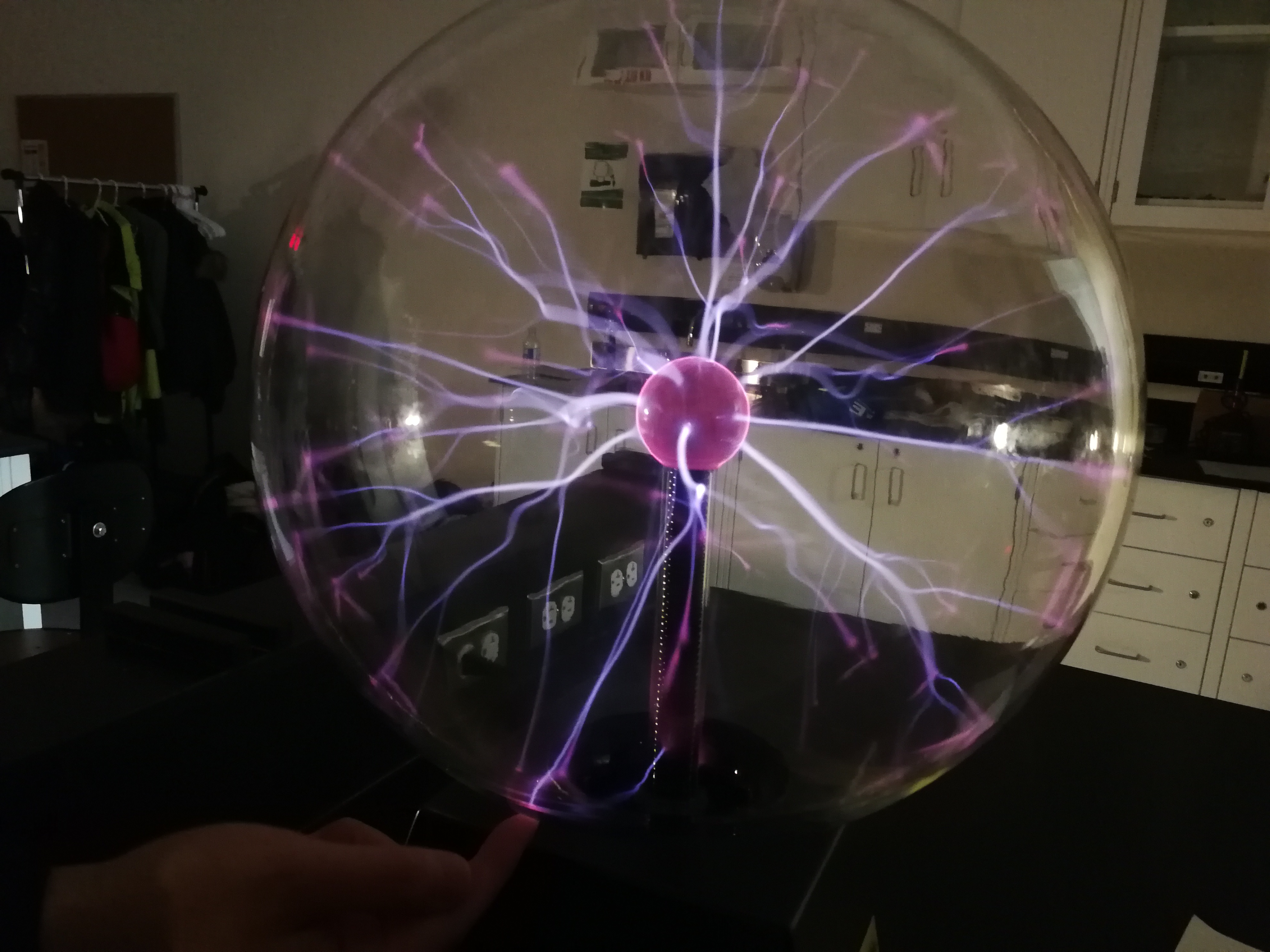 If I were to place an led near the plasma ball, it would actually light up without touching it!
If I were to place an led near the plasma ball, it would actually light up without touching it!
2) When electromagnetic waves come into contact with materials, some parts of the wave’s spectrum are absorbed! The way it is absorbed depends on the atomic and molecular composition of the material (the material at a quantum level). The spectrum that is produced after certain parts are absorbed is called an absorption spectrum. The absorption spectrum is incredibly useful for astrophysicists looking to analyze the chemical composition of celestial bodies. With just a glimpse of what the electromagnetic spectrum looks like from the body, they can deduce the chemical composition of the body!
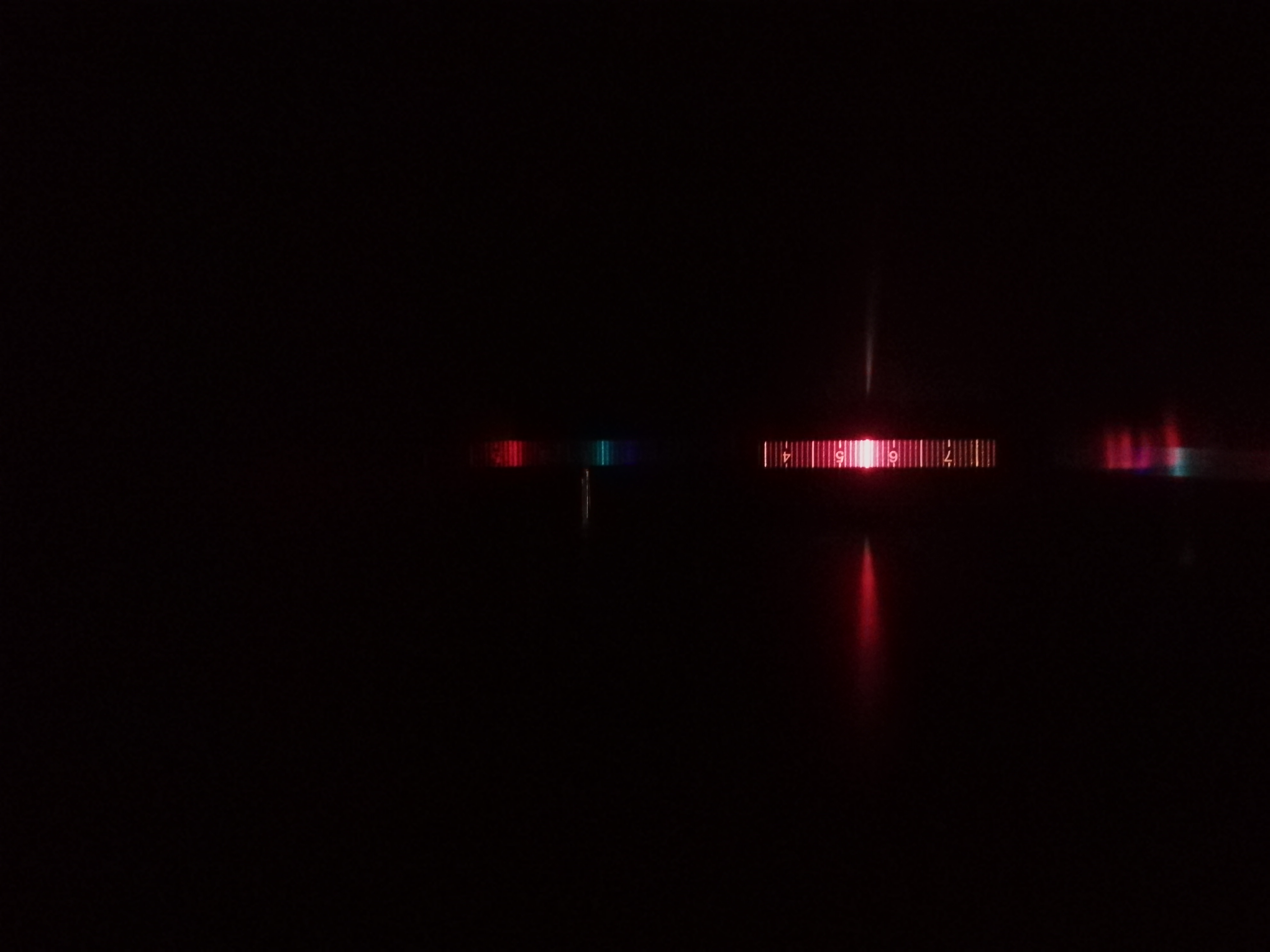 Here I was able to see the emission spectrum (opposite of absorption spectrum) of water vapor!
Here I was able to see the emission spectrum (opposite of absorption spectrum) of water vapor!
3) Light is an electromagnetic wave and has a polarity (direction). Polarity is distinct from the direction that the light is moving, rather it is the orientation of the light’s electric and magnetic fields. Usually, light is emitted in multiple different polarities, making it unpolarized. What is really cool about though is that we can filter polarity and that the polarity of light works under the laws of quantum mechanics! This means that light can be in a superposition of two different orientations (it’s both at the same time), or not depending on what “basis” (orientation of measurement) you use to filter the light. It also means that light changes orientation after it has passed through a filter, as the filter is essentially “measuring” the state of the light.
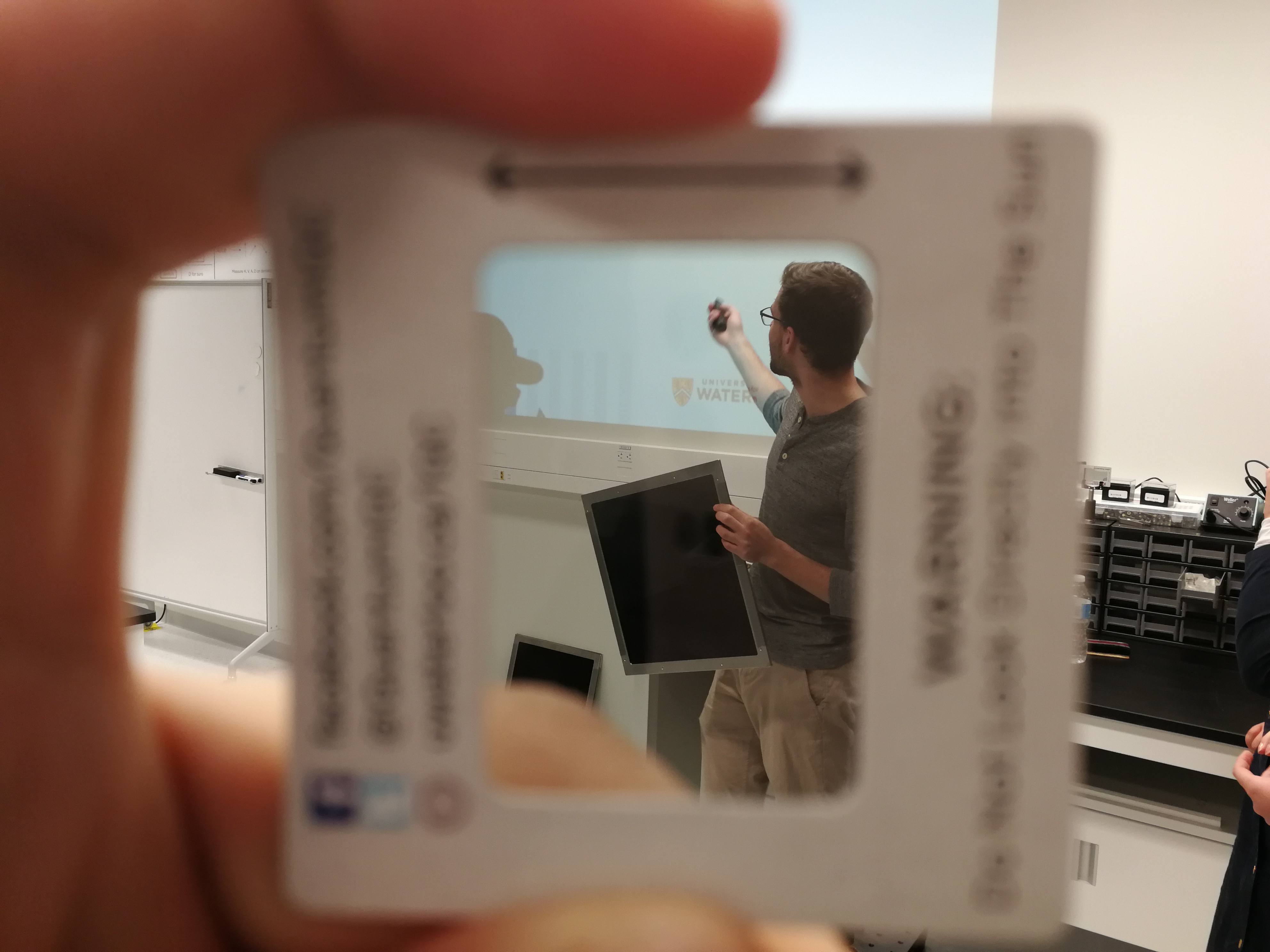 When I filter out horizontal light, the vertical light that comes out of the polarizer held by the presenter does not pass through. This causes darkness, or the absence of light.
When I filter out horizontal light, the vertical light that comes out of the polarizer held by the presenter does not pass through. This causes darkness, or the absence of light.
Using these quantum mechanics, we can encrypt messages with a certain methodology. In essence, it involves encoding bits with a random basis and comparing the user’s basis with the server’s basis. With quantum encryption, my group and I were able to get an actual system setup using light as the means of communication!
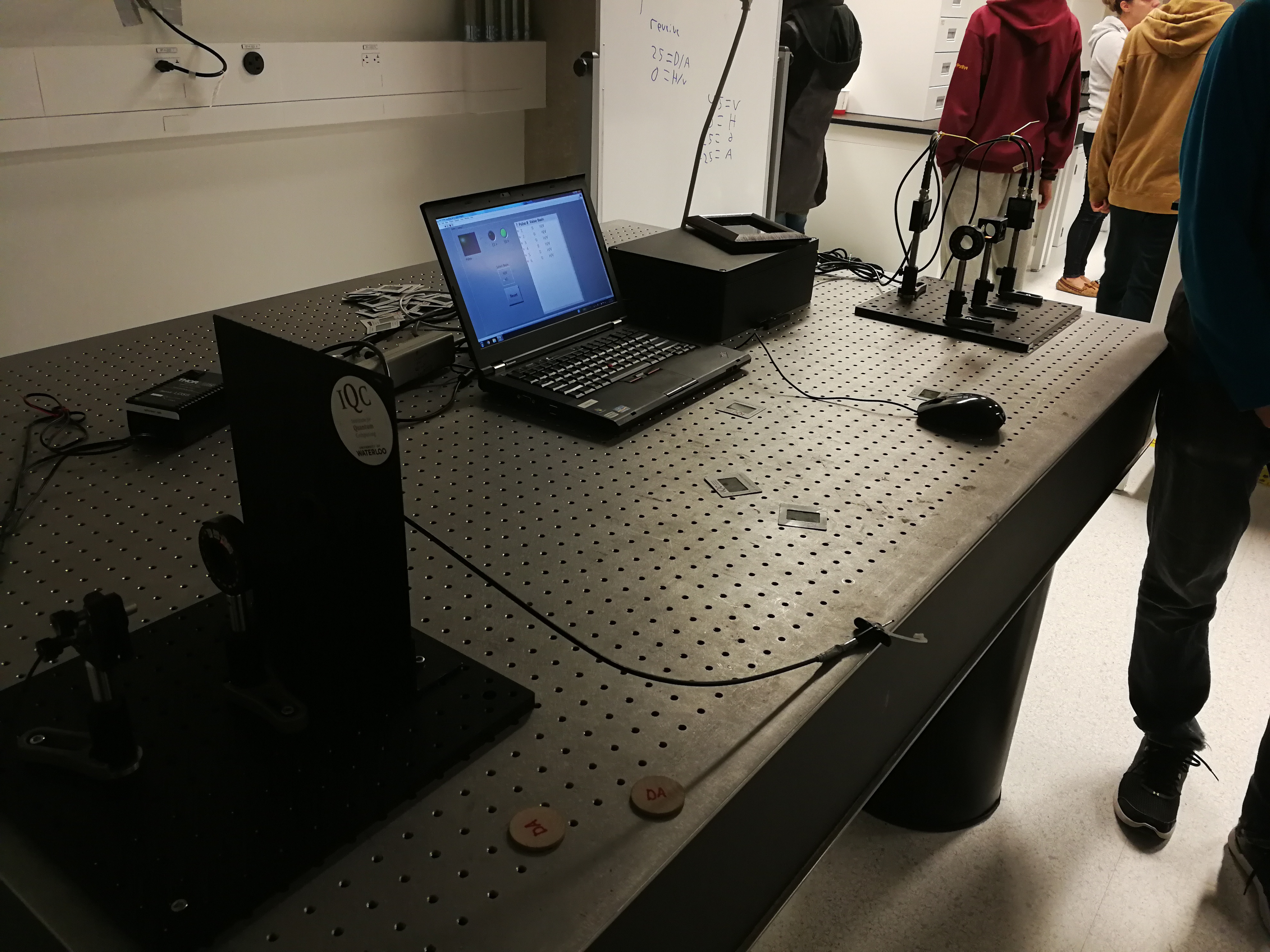 The closer side (left) is the sender of the bit, while the farther side (right) is the receiver of the encoded bit. The laptop displays what was received (measured).
The closer side (left) is the sender of the bit, while the farther side (right) is the receiver of the encoded bit. The laptop displays what was received (measured).
I would love to learn more about how these technologies work, and I have some new questions to start:
1) How would quantum encryption work between computers? Computers use electric signals rather than light, meaning that they can’t take advantage of the polarity of light which follows quantum mechanics. Is there something else that can be placed into superposition? I have heard of quantum entanglement, does that have a use in quantum encryption?
2) Why do superconductors need to be super cool in order to gain their superconductor properties? How does this work on a quantum level, with all the particles? A super low temperature would mean that the average internal kinetic energy of the particles would be very low as well.
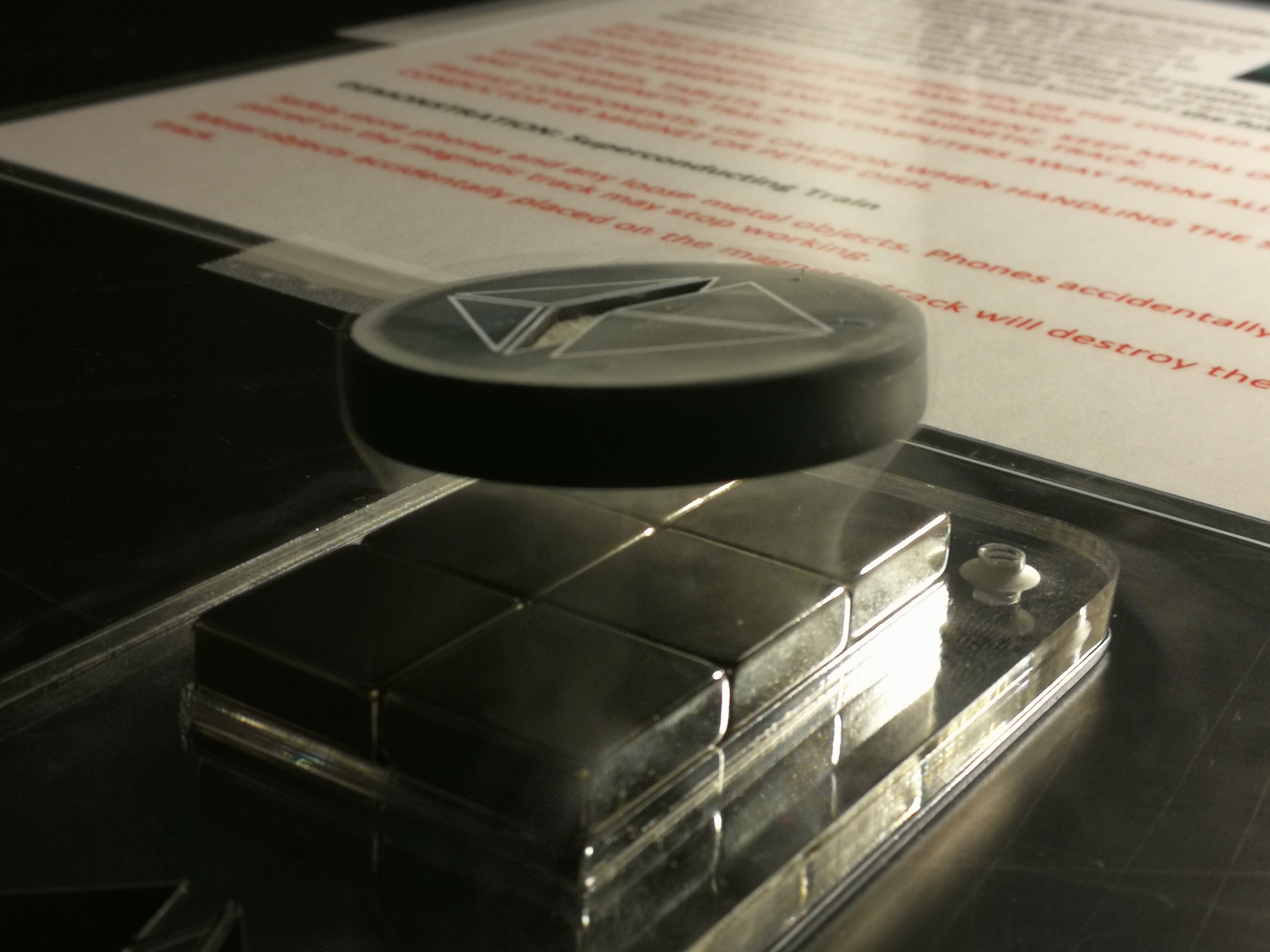 Superconductors can levitate or hover over magnets!
Superconductors can levitate or hover over magnets!
A model of how a maglev (train that uses magnetic levitation) would work. It uses superconductors!
Something incredible that I saw today was a two-dimensional hologram! What’s really crazy about it is that despite it being two-dimensional, it has all the properties of three-dimensional objects. A different image is given from different points of view. If you look at the image through just a small hole, by moving your point of view you can still see the entire image. This means that we can use holographic technology to store more information into a smaller space, giving way for an advanced form of computer memory. On the other hand, our observations on holograms have intrigued the question: “Is our world just a hologram?”
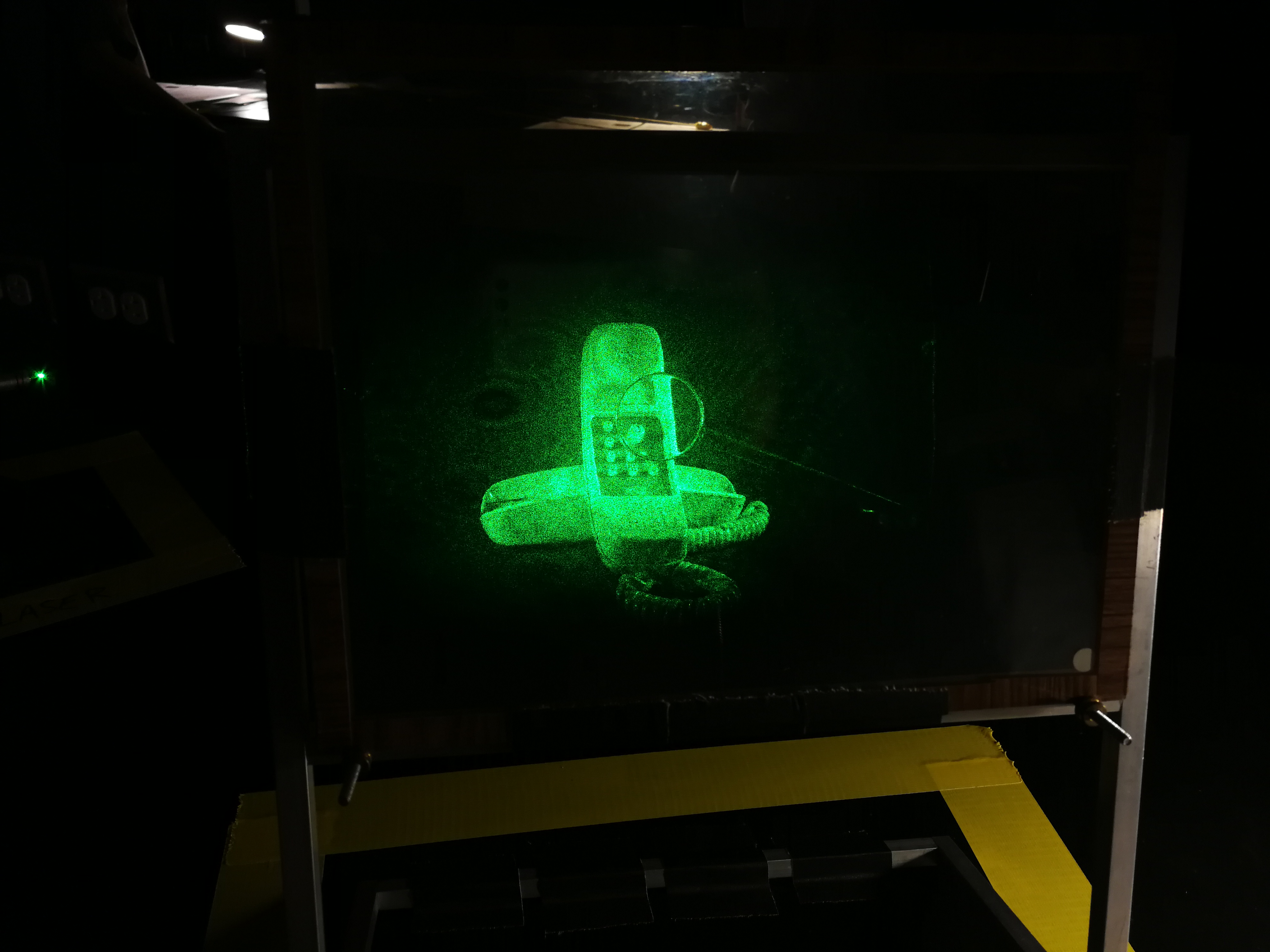 Hologram of a phone! When observed from side, you can see the side of the phone.
Hologram of a phone! When observed from side, you can see the side of the phone.
After Unit Reflection
Analyzing Energy Technologies
In this blog post, I explored numerous technologies that employed different principles and concepts of physics! I focused a lot on how electromagnetic waves could be analyzed or manipulated to charge devices wirelessly, determine the chemical composition of far away bodies, and encrypt bits of information. I learned about properties of electromagnetic waves, which are created when thermal energy transforms by radiation. I investigated superconductors, which have magnetic properties that allow objects to levitate, preventing them from losing mechanical energy to thermal energy by friction.